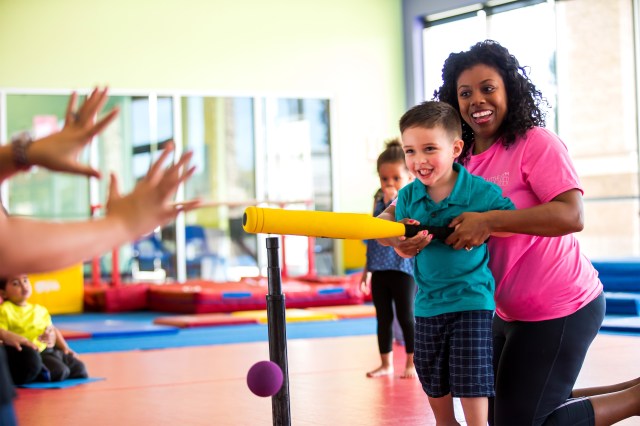With everything going digital, remembering to incorporate physical activity into your child’s daily life can be easily forgotten or overlooked. There used to be a time when children would spend their days outdoors, riding bikes and playing catch. But in recent years, concerns for children’s safety and the rising popularity of technology and video games have led to a decline in physical activity.
We already know that physical activity provides countless health benefits such as muscle and bone development. But did you know that it is crucial for a child’s developing brain as well? According to research, physical activity helps improve a child’s emotional intelligence.
As the current Director of Curriculum & Training at The Little Gym, I’m charged with developing a curriculum that gets kids moving in our program while living it at home by encouraging physical activity with my own children. Below are a few ways that you can get your own child moving and grooving.
Get Moving
This doesn’t mean that you need to go to the park to run sprints. Simply get their bodies moving! Walk the dog together and use the time to connect with your child and talk about their day. Or get your child involved in an enrichment class like The Little Gym where they can learn through play.
Big Body Play
Outdoor games like Red Rover and Freeze Tag are great for big body play. This kind of physical activity engages the child’s senses and helps develop the sensory and social skills they will need as they grow older.
Organized Sports
Get your kids involved! Recess or team sports can be a great way to get your child moving. Sports can also teach important life skills like taking risks or overcoming failures.
Reduce Time-Outs
Redirection is a great way to diffuse a temper tantrum. This is especially true for younger children who can’t yet be reasoned with. Instead, get them moving to redirect their energy and their attention. Encourage physical tasks such as throwing a ball to the dog several times as an alternative to time-outs. This will help re-direct the child to move instead of dwelling on the situation.
There are tons of physical activities that you can introduce to get your children involved and help raise a well-rounded child. In addition to some of the tips for exercise that I listed above, emotional well-being, brain function, confidence and self- control are among some of the other important benefits that physical activity can enhance.
Play Provides Emotional Well-Being
Physical activity has a direct impact on a child’s emotional well-being, so make it a priority. Engaging in physical activity releases endorphins that tend to make you happier and healthier.
For example, positive contact plays a key role and some experts state that children need a minimum of 12 hugs a day to feel loved and to grow. When you hug your child, fully embrace them. The longer you hold the hug, the better your child can process what it means.
Play Boosts Brain Function
When kids are physically active, their brains operate at a higher level. This often allows them to explain things more clearly than when they’re sitting still. This is a great developmental skill to learn. Physical activity also helps the brain shift and balance emotions, which in turn helps with self-control.
Play Encourages Emotional Control & Self-Regulation
When children play, they engage in social situations that help develop emotional intelligence. This is a great way to help your child practice social skills such as sharing or taking turns.
Since physical activity plays such a key role in the overall development of children, it’s important to make it a priority. According to some experts, children should be engaged in about three hours of physical activity each day.
One of the best ways to help children develop an appreciation for an active lifestyle is to show them how you have made healthy habits a part of your own life. When children see you choose healthy behaviors, they’ll be more willing to choose them for themselves, too!
